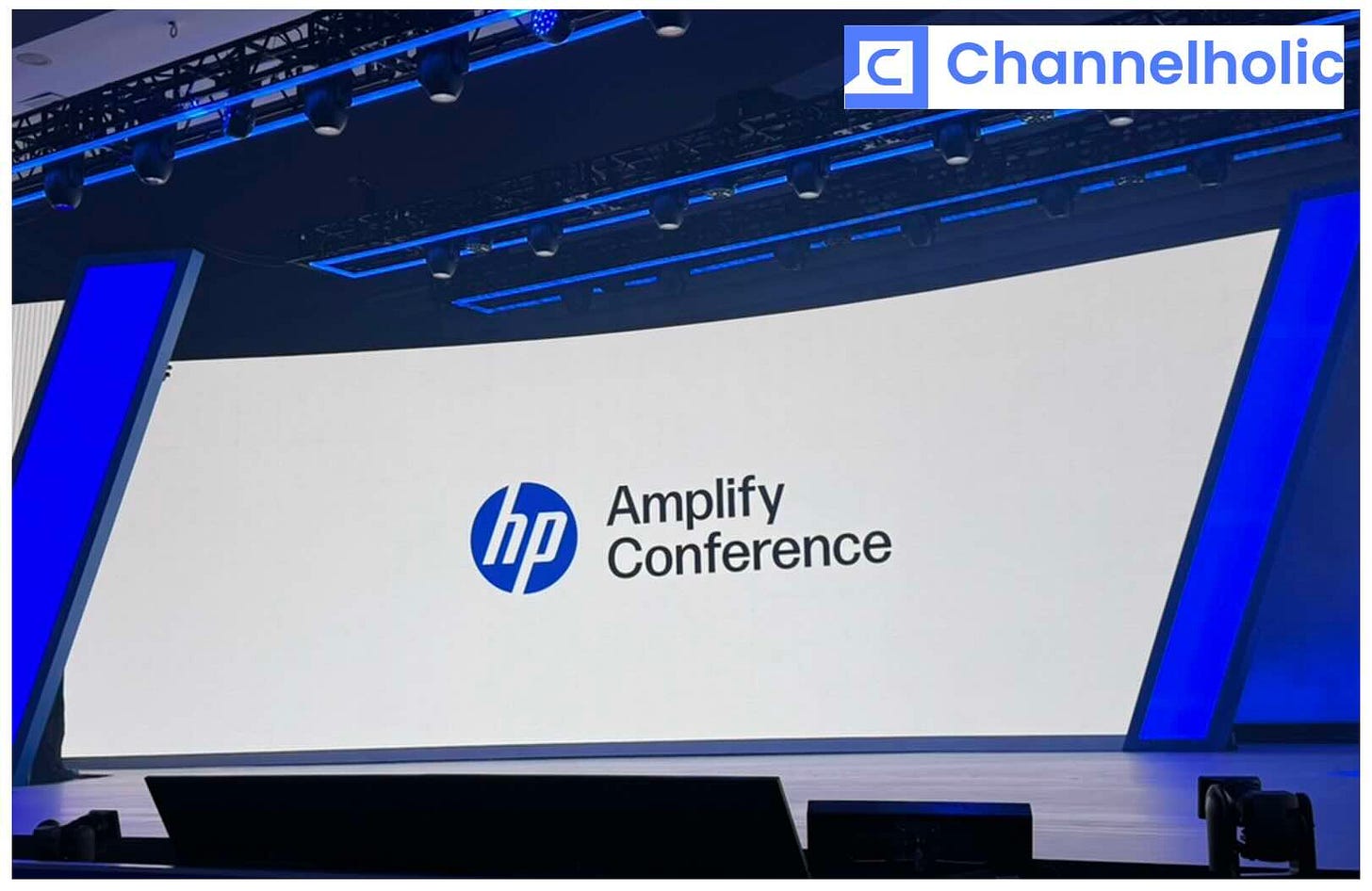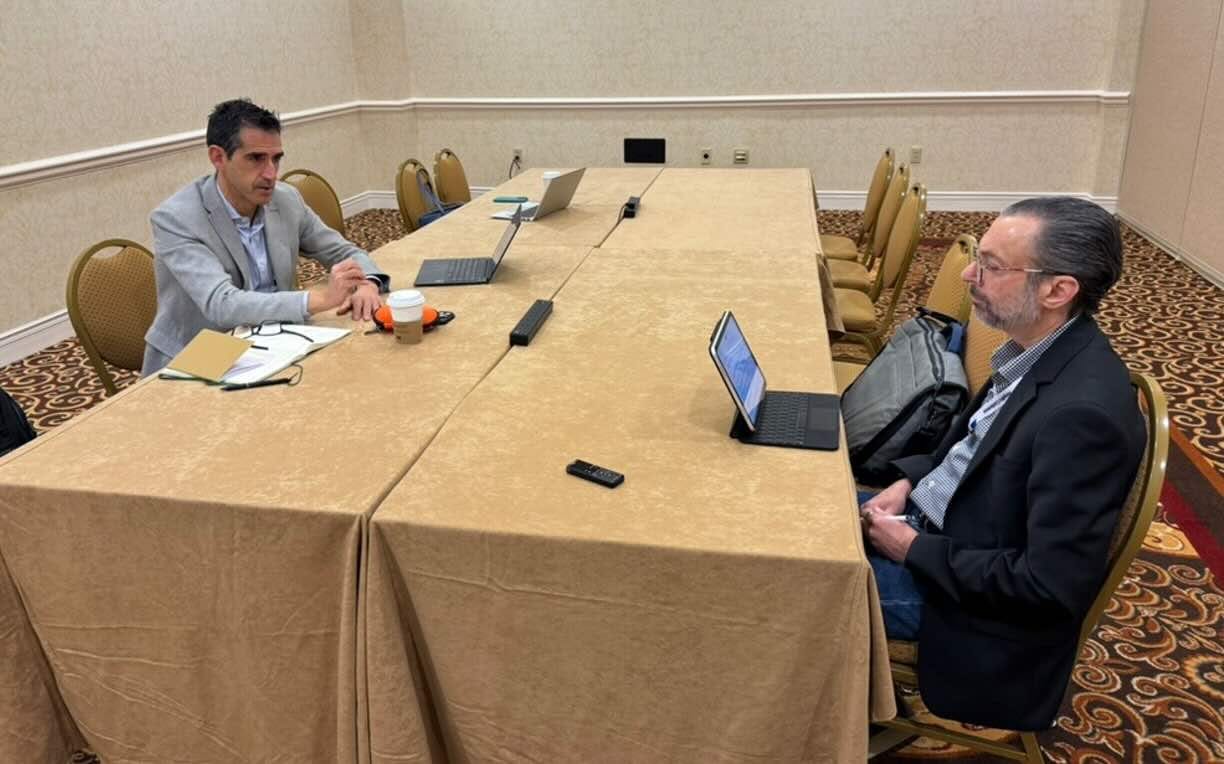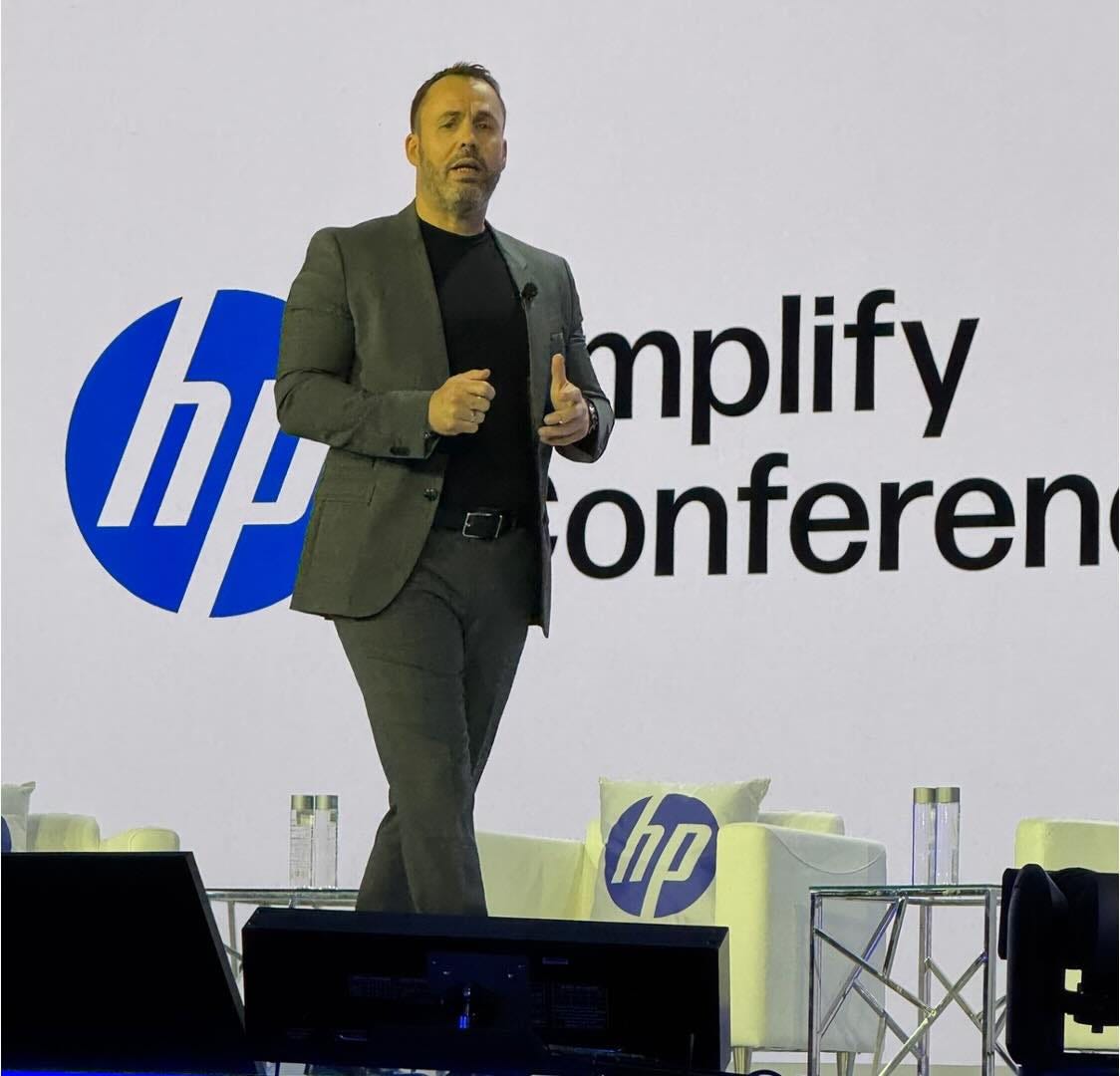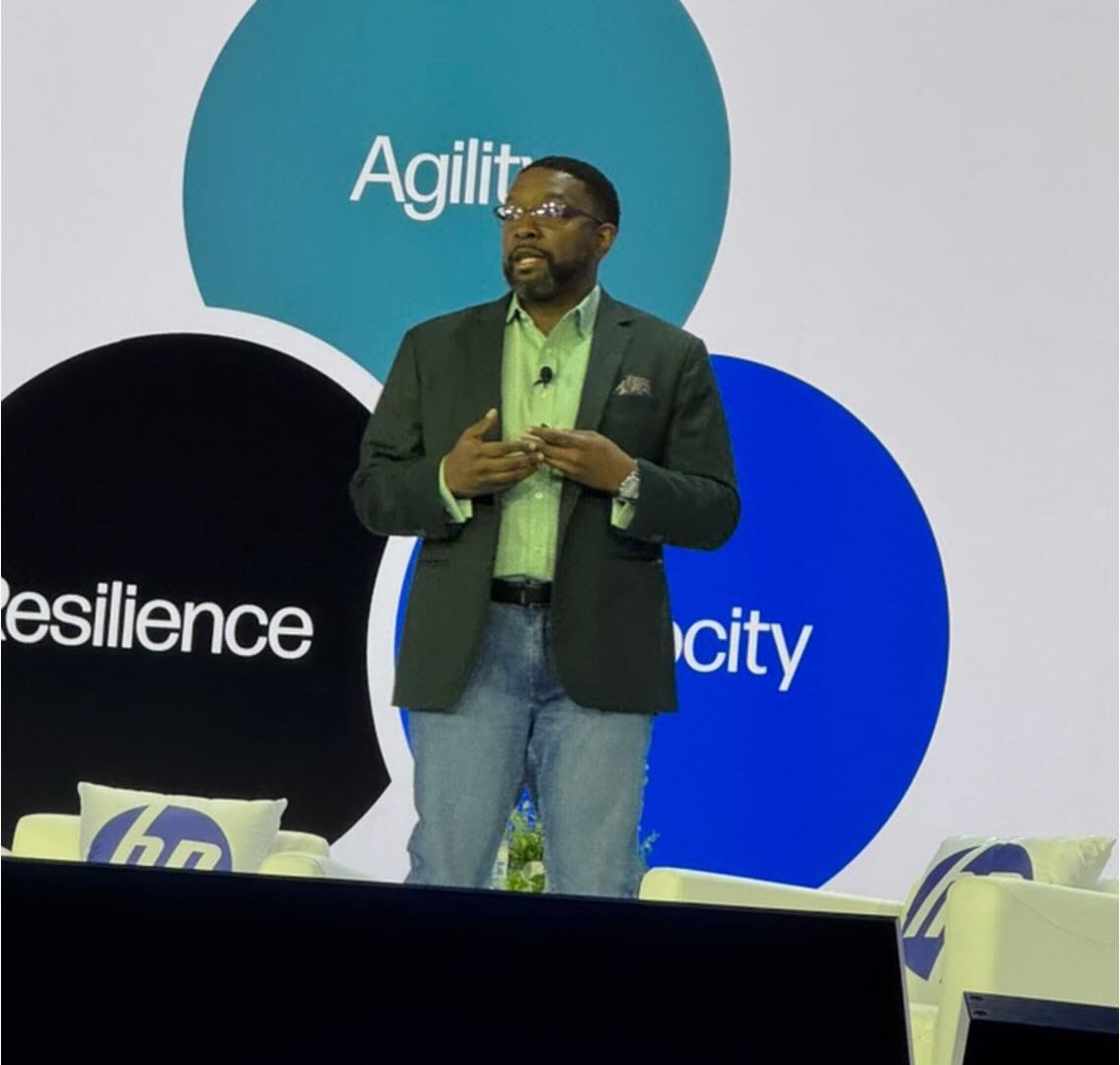Don’t Sell Hardware
Sell hardware-based experiences instead, HP advises, if you care about margins. Plus: why HP’s not worried about tariffs and how Ingram Micro is automating integrations.
I buy a new laptop every couple of years based mostly on things like weight, battery life, and durability. If my next such device ends up being an HP, however, it probably won’t be due to any of those features. It’ll be because the laptop in question is compatible with HP’s new Go service, which when it ships this spring will connect roaming users of select devices—seamlessly and well behind the scenes—to broadband from AT&T, T-Mobile, and Verizon.
If you’re a frequent flier in constant need of connectivity, you’ll understand the appeal immediately. What makes that appeal interesting in relation to a PC, though, is how little it concerns specs and how much it concerns the feeling associated with going effortlessly online wherever you happen to be the moment you open your notebook.
Put another way, the thing I came home from HP’s Amplify conference in Nashville this week coveting isn’t a device. It’s an experience. Like the experience HP says it delivers when one of its proximity-based docking stations connects with your laptop a few precious instants faster by initiating the process when the devices get near one another. Or the experience HP plans to deliver soon when all you’ll need do to link your PC with a conference room display is walk through the door.
Judging by this week’s event, moreover, HP believes talking about experiences is a surer path to success for itself and its partners than talking about hardware. “A hardware conversation is hard,” says Carles Farre (pictured), SVP and COO of HP’s solutions unit. “It’s cost-based. It’s price-based. It’s really a dry conversation.”
And how could it not be? Businesses don’t care about hardware these days. They care about solutions. Channel partners know it, too, as GTIA’s recently published 2025 State of the Channel report makes clear. Solutions placed first among the survey sample’s current offerings. Reselling hardware and software placed dead last.
None of this is news to HP. Which is why for all its unapologetic love of hardware, the company had a lot less to say about hardware at Amplify than it did about experiences and solutions. Hardware, HP knows, is a commodity. Experiences and solutions aren’t. To the contrary, they’re tools for avoiding commoditization, especially when they impact otherwise painful workflows like redacting sensitive information from documents. Businesses that need to do that typically use Sharpies at present. HP’s newest printers do it automatically.
“We know end customers are generally looking for ways to reduce costs, increase productivity, and get their job done,” says Ali Sedghi, HP’s vice president and general manager of office print transactional solutions. “Redaction is a great example.”
The more futuristic scenario HP described elsewhere during Amplify, in which earpieces combine with software, services, and AI to whisper real-time patient information to caregivers as they enter a hospital room, is an even better example, and not just for healthcare providers. Partners benefit from higher margins and stickier relationships too.
“This is when they differentiate themselves, because they become a trusted advisor,” Farre says. “They’re providing a full solution.”
Winning with the portfolio
HP, which aspires to be in the full solution business itself, clearly knows it can’t get there alone.
“HP is going to enable the technology. We need you, our partners, to work with us and bring that technology to these verticals,” said Tuan Tran, president of HP’s Technology & Innovation Organization, during a keynote. “That’s where all the hard work’s going to be.”
Actually, HP has done some hard work of its own in recent years readying itself to sell solutions via partners. Key steps have included adding conference room peripherals to its existing PC and printer offerings by acquiring Poly in 2022 and centralizing the company’s org chart in ways that make stitching hardware, software, and services together simpler.
“If we are truly to enable the vision, we need to design products differently,” observes Kobi Elbaz (pictured), SVP and general manager of global revenue operations.
With the bulk of that effort behind it, he and many others emphasized this week, the time has come to compete as “one HP” rather than a collection of siloed product lines. “We need to make sure that we win as a company, that we win with a full portfolio,” says CEO Enrique Lores.
That only happens if partners help make it happen, though, which is why HP introduced a new “SuperPower Booster” program this week. Set to launch on May 1st for commercial partners (with retail and distribution partners joining later in the year), it will pay companies used to selling one kind of HP offering up to 40% more for selling multiple kinds instead.
“If you are just specialized in personal systems or specialized in print, you’re still going to get what you used to get,” Elbaz notes. “But if you start to work across the HP portfolio and bring in two or three or four [categories], you get a booster on overall compensation.”
The goal is to make focusing on solutions rather than products as profitable for partners as it is for HP itself.
“Experiences get better the more of our portfolio you buy,” observes Dave McQuarrie, HP’s chief commercial officer. “We want to double down on those who are helping us create this different vision for the future, and we want them to be rewarded for doing so.”
Global anxieties and questions
Of course, just because HP spoke mostly about experiences and solutions this week doesn’t mean it said nothing about products. In what personal systems president Alex Cho called “the biggest bang that we’ve had for a long time,” the company unveiled over 60 new AI PCs during Amplify and proclaimed this the perfect time to sell them.
“We call it the triple good whammy,” Cho said, noting that devices purchased at the start of the pandemic are due for a refresh, Windows 10 is approaching end of life, and demand for AI-enabled endpoints is climbing. Indeed, it’s hard to imagine anything preventing circumstances like that from driving a whole lot of AI PC buying.
Well, there is one thing. HP went out of its way, however, to assure Amplify attendees it’s not a thing worth worrying about.
“We’re comfortable and confident to tell you that we are tariff ready,” said Ernest Nicolas (pictured), the hardware maker’s chief enterprise operations officer.
That Nicolas, Lores, McQuarrie, and others all felt compelled to reiterate that message multiple times across two separate general sessions and during a press conference in between reflects what Elbaz calls “anxiety and questions” from its partners about the topic. Unnecessary anxiety and questions, he adds, because HP has been anticipating something like this for years.
“During Covid we realized that we cannot have any more a supply chain footprint that’s concentrated in one place,” Elbaz says. As a result, the company has expanded manufacturing in the U.S. and India, built factories in Mexico, Thailand, and Indonesia, and announced plans to open an additional facility in Saudi Arabia.
“By the end of this year, 90-plus percent of what we sell into the U.S. will be built outside of China,” Nicolas says. The upshot, HP asserts, is that what might otherwise have been a legitimate threat could turn out to be a competitive advantage over less prepared hardware vendors instead.
AI automates integrations at Ingram Micro
HP isn’t just asking end users to deploy AI-based solutions. It’s doing so itself, a practice McQuarrie calls “drinking our own champagne” rather than “eating our own dog food.”
Ingram Micro, an HP distribution partner and Amplify exhibitor, is similarly devoted to metaphorical cork popping. “We sell the most amazing technology,” observes Sanjib Sahoo (pictured right), who per earlier reporting became president of Ingram’s Global Platform Group two months ago. “Should we not use the most amazing technology to give a better experience?”
The specific experience Ingram officially began enhancing three days ago has inspired more than a few vendors and solution providers to reach for something harder than champagne in the past. “In my opinion, one of the biggest blockers in B2B is integration,” Sahoo says. “Nobody has resources. It takes money. The formats are not the same.”
Linking ERP, CRM, and other business applications to a distributor’s backend systems (as TD SYNNEX too has recently noted) has historically taken months or even years as a result. According to Sahoo, however, the Integrations Hub Ingram added to its next-gen Xvantage platform this week more or less eliminates that process.
“Say you have a Salesforce or other account,” he explains. “You can put in your username, password, or plugin and within seconds or a minute it’ll automatically connect with Xvantage.”
The process relies on a patented AI framework trained on more than a year’s worth of integration data, Sahoo adds. “Partners can come in as they are and we can meet them where they are,” he says. “They don’t have to change anything on their side.” Vendors can use the Hub to simplify Xvantage integrations as well, Sahoo notes, if not to a few minutes than at least to a few weeks.
Per an earlier post, Ingram is using the time freed up by tools like the Integrations Hub to have better conversations about more strategic topics. “Our sales team can talk to partners about their problems, how they can grow their business, what their pain points are, what solutions are there, what emerging technology they can work on,” Sahoo says.
Next up on the Xvantage roadmap and in development now is business intelligence functionality that will draw on the platform’s rich store of order, pricing, and inventory records to help Ingram and its partners make smarter supply and demand decisions.
Sahoo calls that “using data to create an experience.” And aren’t experiences what everyone, including yours truly, ultimately craves?
Want to hear more from Sahoo?
He’ll be joining us on the podcast I co-host in two weeks. No time like the present, though, to become a subscriber.
Also worth noting
Auvik has added SaaS automation, SaaS license optimization, endpoint network monitoring, and enhanced server monitoring functionality to its expanding IT management platform.
Rewst’s robotic process automation solution now robotically automates backup processes involving N-able’s Cove Data Protection platform.
GoTo says its new AI Receptionist is the 24/7 customer service assistant SMBs have long wanted but never had.
Pax8 has a new brand to match its new marketplace.
NVIDIA has new AI-ready GPUs coming.
CrowdStrike, Dell, HPE, Lenovo, and Supermicro, among others, have new NVIDIA-ready products based on those GPUs in the works too.
As does data infrastructure vendor DDN, which has also added two solutions to the Google Cloud Marketplace.
Trend Micro has open sourced Cybertron, its AI model and agent framework.
IRONSCALES now feeds email security data straight into CrowdStrike’s Falcon Next-Gen SIEM.
Proofpoint has signed an expanded global partnership with Microsoft.
Proofpoint veteran Joe Sykora, meanwhile, is now general manager for the Americas at Coro.
Data erasure specialist Blancco, for its part, has a new CMO, CRO, and SVP of business operations and strategy.
Stellar Cyber and WithSecure are strategically partnering on threat detection and response.
Not a moment too soon! Applications are open for a spring certification camp hosted by ISC2 and Women in CyberSecurity.
ISC2 is posting a series of articles about women in cyber this month too.









